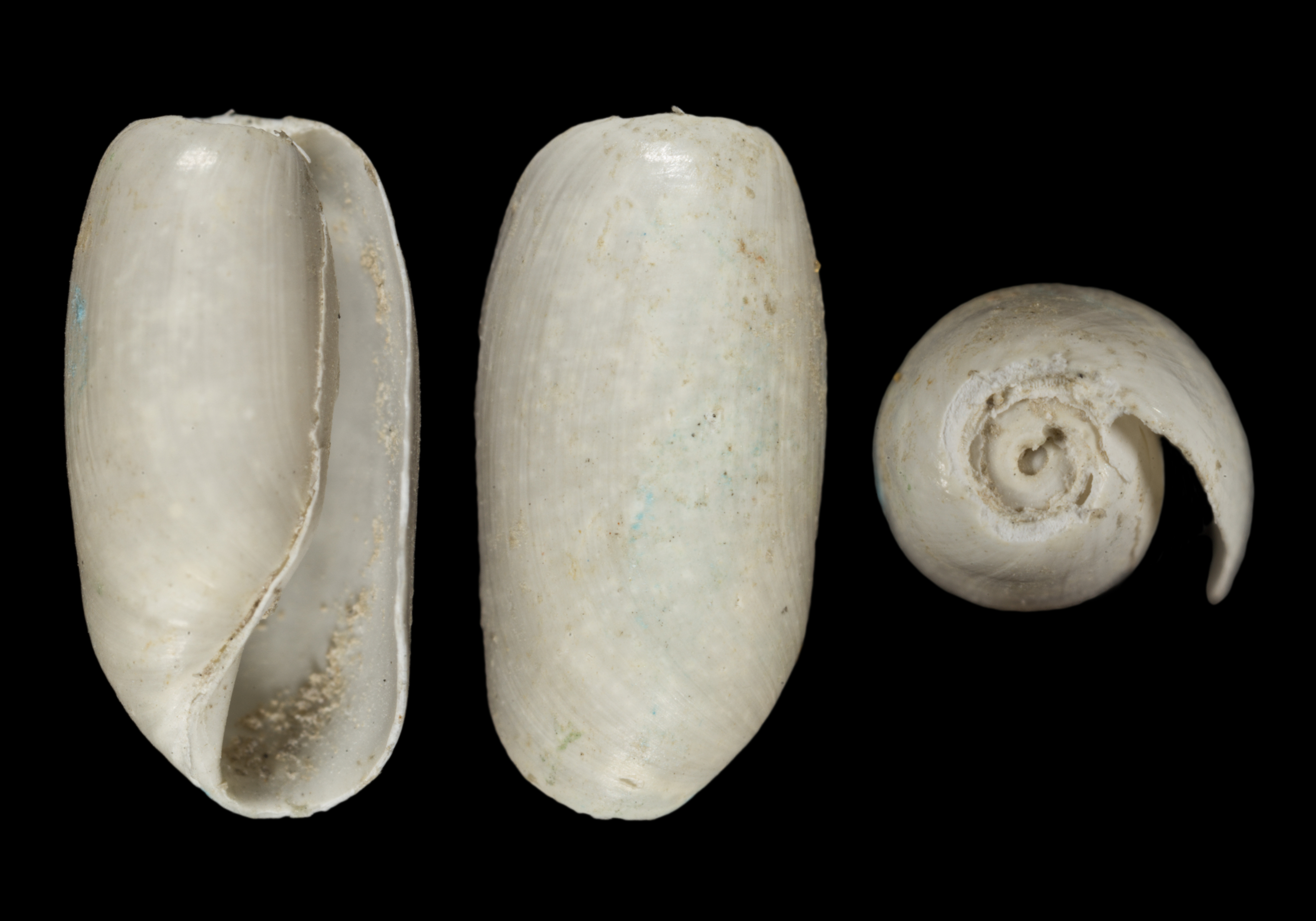Cylichna lemchei
Cylichna lemchei Bouchet and Warén, 1979 (Holotype). Norwegian Sea (64°26,5'N-01°36,1'E). Specimen length = 7.15 mm
Shell description
The shell is external and white in colour, usually with a cylindrical shape, and usually the outline is more rounded in the front and blunted in the hind part. The opening is small, but extends the length of the shell. The top of the shell (apex) is sunken. The shell is not umbilicated. The shell surface sometimes has a pattern consisting of spiral grooves. The shell is covered by a thin yellowish outer layer (periostracum) (Bouchet & Warén 1979). The length of the shell is maximum 9.5 mm.
Animal description
The head shield is lobed towards the back and there is no middle line. There are no side extensions of the foot (parapodial lobes) and no extension of the mantle under the snail (pallial lobe) (Bouchet & Warén 1979).
Anatomy
Radula formed by three outer lateral teeth and one inner lateral tooth on each side and one central (rachidian) tooth. The outer lateral teeth are smooth, whereas the inner lateral teeth have a broad base and the inner edge carries denticles. The central tooth has denticles. The gizzard is cylindrical and holds three unequal kidney bean shaped plates. Two of the plates are paired and the unpaired plate is more elongate, on the dorsal surface the plates have a raised field. The foregut carries a large crop (Bouchet & Warén 1979). The male reproductive system is unknown.
Ecology
Occurs in depths from 543–3204 m (Høisæter 2009).
Geographical distribution
Found in Norway off Trondheim (64°26’-64°19’ N, 01°36’-01°44’ E), on the slope and the deep basin of the Norwegian Sea (Bouchet & Warén 1979, Høisæter 2009).
Cylichna lemchei Bouchet and Warén, 1979 (Holotype). Norwegian Sea (64°26,5'N-01°36,1'E). Specimen length = 7.15 mm
References
Bouchet P og Warén A (1979). The abyssal molluscan fauna of the Norwegian Sea and its relation to other faunas. Sarsia 64: 211-243.
Høisæter T (2009). Distribution of marine, benthic, shell bearing gastropods along the Norwegian coast. Fauna Norvegica 28: 5-106.
